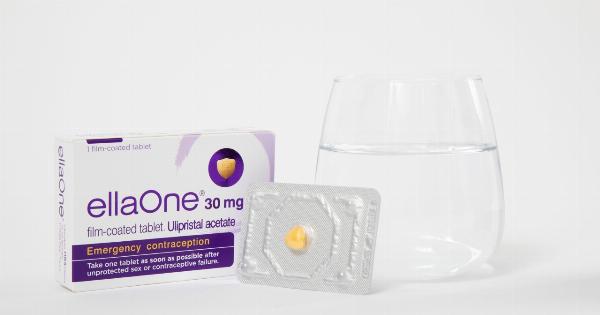Spiral contraception, commonly known as an intrauterine device (IUD), is a highly effective form of birth control that is placed inside the uterus.
IUDs are popular among women because they’re easy to use, long-lasting, and don’t require continuous effort or regular maintenance like other forms of birth control.
But, like all types of birth control, IUDs can fail, leading to unintended pregnancy.
In this article, we’ll take a closer look at the causes of spiral contraception failures, the risks of pregnancy with a failed IUD, and what you should do if you suspect your contraceptive device has failed.
How Does an IUD Work?
Before we get into the causes of IUD failure, let’s understand how an IUD works in the first place. There are two types of IUDs: hormonal and non-hormonal.
Hormonal IUDs release a small amount of the hormone progestin, which thickens the cervical mucus, making it difficult for sperm to travel to the egg. They also thin the lining of the uterus, making it difficult for eggs to implant.
Non-hormonal IUDs, on the other hand, work by creating an inflammatory reaction that is toxic to sperm.
Regardless of type, an IUD is inserted into the uterus by a healthcare provider. It sits inside the uterus, preventing pregnancy for a certain amount of time. Depending on the type of IUD, they can last from 3-10 years.
What Causes IUD Failure?
While IUDs are a highly effective form of birth control, they aren’t foolproof. Failure rates are low, but it is still possible to get pregnant with an IUD in place. Here are some of the reasons for IUD failure:.
Expulsion
IUDs can sometimes move out of place or get expelled from the uterus. This can happen due to improper insertion, vigorous physical activity or sexual activity, or because of certain medical conditions like adenomyosis, fibroids, or endometriosis.
Perforation
Sometimes, an IUD can perforate the uterus during insertion, which can cause significant pain and bleeding. When this happens, the IUD may need to be removed and replaced with a new device.
Partial Coverage
IUDs can sometimes shift or move and end up providing only partial coverage, which results in an increased risk of pregnancy. This is more likely to happen with non-hormonal IUDs because they don’t provide a constant level of protection.
Inadequate Protection
IUDs can also fail to provide protection if they are expired or used beyond their recommended lifespan. They can also fail if the strings attached to the device are cut too short or too long, or if the IUD gets tangled or knotted in the uterus.
Risks of Pregnancy with a Failed IUD
Pregnancy with an IUD in place can carry some risks, depending on the stage of pregnancy and the location of the device in the uterus. Here are some of the risks associated with a failed IUD:.
Abortion or Miscarriage
If a woman becomes pregnant with an IUD in place, there is an increased risk of miscarriage or spontaneous abortion.
This is particularly true for pregnancies that occur with a non-hormonal IUD in place, as these devices can cause an inflammatory reaction that is toxic to the developing fetus.
Ectopic Pregnancy
Another risk associated with pregnancy with an IUD is an ectopic pregnancy. An ectopic pregnancy occurs when a fertilized egg implants outside the uterus, usually in the fallopian tubes.
Ectopic pregnancies can be life-threatening and require immediate medical attention if suspected.
Preterm Labor
Women who become pregnant with an IUD in place are also at an increased risk of preterm labor and premature birth. This is because the IUD can cause irritation to the uterus, leading to contractions and early labor.
What to Do if You Suspect IUD Failure
If you suspect that your IUD has failed, it’s important to see a healthcare provider as soon as possible. They can perform an exam to check the position of the device and determine whether or not you are pregnant.
If the IUD has been expelled or is out of place, it will need to be removed and replaced.
If you are pregnant, the provider will discuss the risks associated with pregnancy with an IUD in place and help you make an informed decision about what to do next.
Conclusion
IUDs are a highly effective form of birth control, but they aren’t foolproof. While failure rates are low, it is still possible to get pregnant with an IUD in place.
By understanding the causes of IUD failure and the risks associated with pregnancy with a failed device, you can make informed decisions about your birth control options.






























